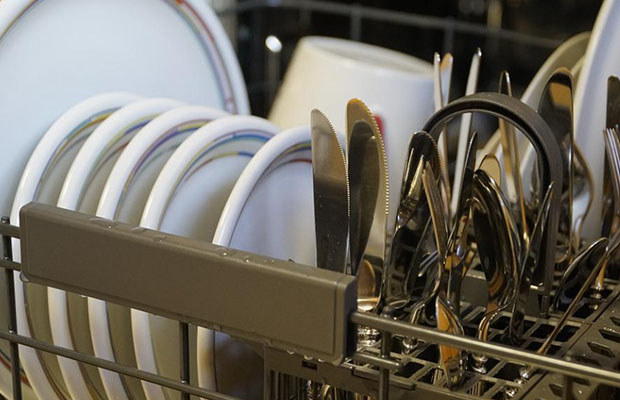One of the most typical flaws discovered during a home inspection is a dishwasher high loop, which is also quite easy to fix. Do you know what is a dishwasher high loop and why you need one? Today we are going to have a deep discussion on this issue.
Table of Contents
What Is A Dishwasher High Loop?
The high loop on the dishwasher stops water from draining improperly. The wastewater from your sink can possibly drain into your dishwasher if the drain pipe isn’t lifted. Your dishwasher will eventually have standing water as a result of this.
Backflow is prevented by an air gap that is created by the high loop’s slope. The garbage disposal or the sink will receptacle the waste that was unable to reach the dishwasher. This makes it simpler to manage clogs if they do happen. Dishwasher clogs are much more difficult to clear than sink or garbage disposal clogs. If it is fitted properly, this also reduces the likelihood that there will be a blockage in the first place. If put appropriately and checked to ensure they don’t come loose, high loops can be a useful technique.
Read more: how does a dishwasher work?
A High Loop Installation Guide
In most cases, installing a high loop is simple. Installing a bracket to the underside of the countertop to hold the drain line is the simplest solution. Using a zip tie to secure the object is an additional choice.
Manufacturers pre-installing them in new dishwashers is becoming more and more prevalent. Even if it’s becoming commonplace, a house inspector will nonetheless point out the absence of a high loop that can be seen. The dishwasher installer might have skipped installing a high loop under the sink because they saw one already there, but the home inspector has no means of knowing if this is the case and will still list it as a defect. It is advised to examine the dishwasher’s production specifications to see if the high loop is already included.
Why You Need A Dishwasher High Loop?
Although high loops are a useful technique, they are not the greatest. A high loop does not guarantee the prevention of back siphonage. If the water pressure drops noticeably, the water flow may reverse and the dishwasher may suck unclean water. Additionally, it’s not always practicable to provide a 32-inch space between the floor and the high loop’s highest point. If this isn’t possible, you should consider purchasing an air gap.
What About Air Gaps?
As opposed to high loops, air gaps for your dishwasher are a safer and better solution. To stop sewage from entering the dishwasher from the drain, they are positioned above the sink. This divides the hose, preventing water from passing through. As a result, there is a space between the garbage disposal and dishwasher. The heading sits above the sink beside the faucet even though they are installed beneath the sink. The vertical air gap is located under this topic. If the drain becomes clogged, openings in air gaps allow water to be released into the sink. If you have an air gap leak, your drain tubes most likely have a blockage someplace.
Is An Air Gap Necessary?
Installing an air gap, which involves slightly more effort, is the only technique to effectively stop all back siphoning in a drain pipe. While some localities demand air gaps, the majority allow high loops on their own. By adding air to the system, the air gap prevents any negative pressure from leading to back siphoning into the dishwasher.
The air gap is located near the sink on the countertop, and the drain hose is attached to it. I have found that most sinks today function quite fine with a high loop installed, however, if you are suffering back siphoning, you might want to talk to a licensed plumber about installing an air gap.
Conclusion
High loops might be a good and affordable backflow prevention solution. They may not be as successful as air gaps, but that doesn’t imply you can’t succeed with one. The best ways to stop backflow from your sink to your dishwasher are air gaps and high loops. These are essential to have so that dirty water doesn’t accumulate at the bottom of your dishwasher.
Read More: Dishwasher Not Spraying Water


